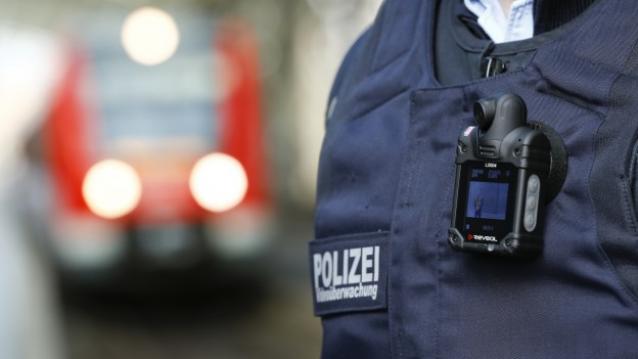When cops in America’s locations placed on their outfits and get their weapons before moonlighting in security careers at nightclubs, clinics, and ballparks, there’s one device they often times leave behind – their body camera.
That’s because most law enforcement officials agencies that produce the cameras required for patrol shifts do not require or won’t allow body video cameras for off-duty officials even if they are working in standard, leaving a gap in policies made to increase oversight and restore self-assurance in police.
Police force departments contend they have only a restricted quantity of body camcorders or that we now have way too many logistical hurdles and costs included. But that discussion doesn’t remain well with those who say it shouldn’t subject whether an official is on patrol or moonlighting at a retail center.
“So long as they may have real bullets, they have to have your body cams,” said John Barnett, a civil protection under the law head in Charlotte, NEW YORK, where shootings concerning law enforcement officials have put use of the video cameras under scrutiny. An Associated Press review of the 20 biggest U.S. towns found that practically all have officials wearing or evaluating body cams, but that only five – Houston; San Antonio; SAN FRANCISCO BAY AREA; Fort Worth, Tx; and San Jose, California – have guidelines needing them for uniformed officials working outside their regular time.
The departments which may have body surveillance cameras or are screening them, but do not require moonlighting officials to put them on, are NEW YORK; LA, Chicago; Philadelphia; Phoenix; NORTH PARK; Dallas; Columbus, Ohio; and Charlotte. Denver also offers them and is also likely to add cams for off-duty work. “There must not be a differentiation,” said Lt. Elle Washburn, who oversees San Jose’s body camera program. “You’re still in even, still have forces of arrest.”
Almost every police agency helps it be clear that officials working in even still signify the team and are at the mercy of police rules even though they’re off responsibility and paid by another person. Trouble can occur everywhere and anytime, so when it can, there’s little difference between an on-duty and off-duty official. Within days gone by three years, there were shootings – some fatal – relating moonlighting officials in Missouri, NEW YORK, Tx, Arkansas, Ohio and Indiana, however the overall quantity isn’t known because departments don’t keep those figures.
In Louisiana, a moonlighting official who wasn’t using a body camera was sentenced in March to 40 years in jail for manslaughter in the fatal firing of an 6-year-old boy carrying out a car chase. An integral piece of information originated from an on-duty officer’s body camera exhibiting the boy’s dad possessed his hands lifted and protruding his windowpane as the moonlighting official and a ex – official both working as deputy city marshals collectively terminated 18 shots. After the shooting ended, the footage proved blood on the entranceway and an officer’s realization the young man is at the passenger’s chair.
Minneapolis and Atlanta are on the list of cities needing the video cameras for off-duty work, plus some others are moving this way, including Cincinnati, which is spending about $1.2 million on 350 surveillance cameras and equipment so all officials will have one and also utilize them on secondary careers – it’s now optional.
Moonlighting officers minus the cameras to rear them up can become more vulnerable to incorrect allegations, said Cincinnati authorities Capt. Doug Wiesman. And it could be tough to make clear just why an off-duty official who used dangerous make didn’t have a camera, he said. “It’s a blunder not to keep these things,” Wiesman said. “Your officials are using that even. Who cares who’s paying them?”
But most places switch off the cameras as it pertains to the an incredible number of hours officers devote benefit private business employers – a common practice however, not one tracked at length. NY City’s new suggestions covering body video cameras specifically say they can not be used in virtually any off-duty activities, including paid details run by the office. One of the 170 departments that contain received U.S. Justice Section grants or loans for body video cameras, it’s exceptional to find in their procedures any reference to equipping moonlighting officials, said Michael White, who works together with those places on training and specialized assistance.
“It’s an evolving concern, but I believe it’s something departments will require to begin responding to,” said White, also a criminology teacher at Arizona Condition University. “It ought to be an integral part of the uniform exactly like other things.” White, who developed a checklist to judge body camera guidelines, said needing them for off-duty details wasn’t really on his radar until an unbiased screen overseeing changes in Cleveland’s office proposed the theory in March.
But up to now Cleveland’s plan has been attained with amount of resistance from metropolis administration and law enforcement officials union, which say using the cams for secondary careers may lead to added overtime charges for officers going back the camcorders to the stop for charging and then for uploading of videos.
Some departments say they have only enough camcorders to protect regular shifts and that they are still wrestling with an increase of pressing concerns about rules on when officials must trigger the surveillance cameras and the increased costs to store the excess video footage, which is more than the surveillance cameras themselves and can come across the millions.
“Great questions i wish I needed answers for,” said Ken Allen, a retired official who now aids with coordinating off-duty careers in Atlanta, where cams are necessary for secondary careers if the official was already assigned one. Reuters



